
Hamedan

Hamedan is one of the metropolis cities of iran and the center of Hamedan province that is located at the foot of mount Alvand and the first capital of the Medes were the first dynasty in Iran.
Hamedan is one of the oldest cities of the world and it is well known as Iranian capital of history and civilization.
Hamedan is a cold city that has a fresh summers and very cold winters. This city is located at the middle of the beautiful nature of Zagros and it is surrounded by the mountains, passes and beautiful rivers. Hamedan is the home of many Christians and Jewish people. This city has five churches that are active. Also the tomb of Esther, Mordecai the great figures of Judaism is located in this city and annually is the host of many Jewish people from the Iran and all over the world.
History

Hamedan, as one of the oldest cities in Iran, has a history of several hundred years. Before the arrival of the Aryan tribes, the city of Hamedan considered as the main habitats of the Kassite tribe. There is a controversy about the time and place of the founder and the name of the founder of the city of Hamedan between the narratives of the Greek historians and geographers, as well as between the Islamic historians. According to Herodotus, the city founded by the first king of Medes Diaco.
Cyrus in 550 BC, defeated Astyagh the last king of Med, and put Hamedan in his summer residence. Thus, with the capture of Hamadan, the other Aryan branch of the Persians exterminated the first rule of the Aryans. Hamedan has been the capital of the Ashkani Kings summer. On the slopes of Hamadan Mosala Hill, a large stone lion is located. Apparently, at the time of the Parthians, the sculpture with another statue, which was similar to it, was mounted on one of the gates of the city.
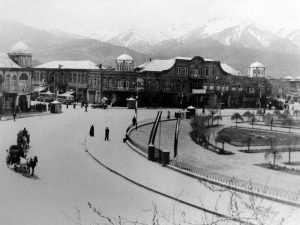
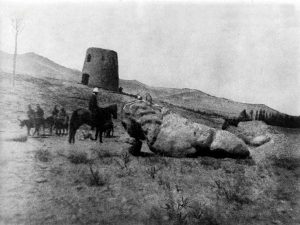
Hamedan was one of the last bases of the resistance of the Parthians against the new Sassanid government. In the Arab invasion, the city of Hamedan, after the fall of Nahavand fell to the hands of the Muslims, and the importance and credibility that the Arabs opened after the conquest of Nahavand, their greatest victory over the Sasanians was counted. From the middle of the third century, the city’s government fell to Sadat Alavi. They ruled as Alavids in Hamedan. The valuable building of the Alavian dome is the relic of these periods.
Abu Ali Sina, the renowned Iranian scientist, has been minister for some time in the city of Shams adulleh Deilami. The tomb of this famous philosopher and doctor is now in the city of Hamedan. During the Seljuk period, Hamedan was the political center and the capital of this dynasty, and therefore some of the Seljuk sultans, including Sultan Massoud bin Muhammad ibn Malekshah and Sultan Muhammad ibn Mahmud, were buried in Hamadan.
Twice the Mongols attacked Hamadan. The first time, in the winter of 618 AH, they obeyed the Mongols because of the horrors they had in the people, and they plundered the property. The second Mongol invasion of Hamadan occurred next spring, because people were not willing to pay the heavy taxes, and the Mongols destroyed the whole city and killed the people by attacking Hamadan. Researchers found the existence of two hills from mass graves in the vast area of Hamedan’s Dugoran neighborhood, the remains of this massacre.
In the Ilkhani era in the seventh and eighth centuries, this city was partially redeveloped and reignited. This prosperity did not last long and the Timor militants seized and destroyed the city. After that, Hamedan was almost forgot for about 300 years.
Hamedan enjoyed blessings and prosperity in the Safavid period. After the extinction of the Safavid dynasty and the rise of chaos in Iran in 1724 AD (1138 AH), the city of Hamedan was captured by Ahmad Pasha Osmani, the governor of Ottoman province, and a massive group of people were massacred Due to the resistance of the people against the Ottoman forces.
Six years later in the year (1144 AH), Nader Afshar brought Hamedan from capturing the Ottomans, and eventually in the year (1144 AH), under the agreement between Iran and the Ottoman Empire, the city of Hamedan was definitively transferred to Iran. In the year (1205 AH), Aqa Muhammad Khan Qajar captured Hamadan and destroyed the tower and its battlement. During the Qajar rule, the position of the city of Hamedan gradually stabilized.
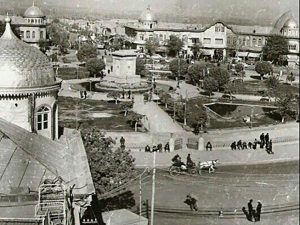
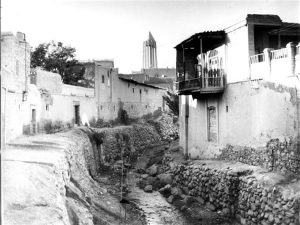
With the outbreak of the First World War, this city and the western region of the country has become a battleground for hostile states and a great deal of social and economic dislocation. Famine and pervasive problems are growing. In the late Qajar era, Hamadan witnessed two great famine at a distance of 10 years.
During the Iran-Iraq war, the Iraqi bombing squad repeatedly targeted the city of Hamedan. One of the most severe bombing strikes was on Friday, July 25, 1966 by Iraqi fighters, which took place on the same day as the International Quds Day.
Dialect and language
The dialect of the majority of the people of Hamedan is Farsi with the dialect of Hamedan. In Hamadan, a minority of Turkic people also live.
Religious
Most residents of Hamadan are Muslims and twelve She’ei imam followers. Religious minorities also have very few inhabitants in the city. Armenian groups arrived in Hamedan on several occasions, especially during the Safavid period, the Armenian entry was more than ever before. Jews from 722 BC when Jerusalem was unveiled by Bokht al-Nasr. Several of the Prophets of Israel entered Iran, especially Hamadan, and these people have remained in this city ever since.
Geographies

Hamedan is located in the valleys and slopes of the northern mountains of Alvand. The highest peak of this mountain is Mount Alvand with a height of 3574 meters above sea level, which is the peak between Tuyserkan and Hamedan from 18 kilometers of Hamedan.
Location of the city
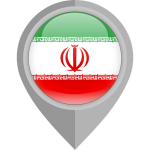
Based on the general census of population and housing in 1395, its population was 554, 406 people (174,731 households).
Population
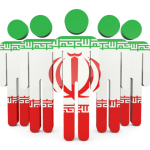
The weather in Hamedan and the climate of the region vary in terms of minimum and maximum rainfall and falls in the seasons. In the mountainous areas, the average annual snow is between 155 and 245 mm, and the cold reaches 30 degrees below zero. In addition, the warmest Hamadan temperature is + 40 ° C and the coldest temperature is -32.8 °c.
Weather

Places
Hamedan is one of the centers of the tourism and artistic industry of the country, both in terms of cultural heritage and historic as well as in terms of tourism.

Gallery










